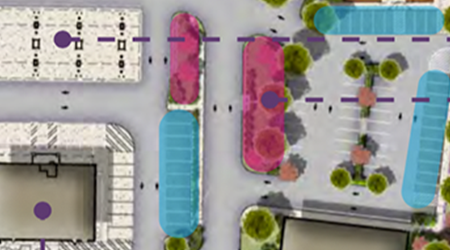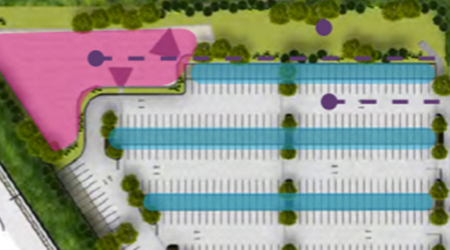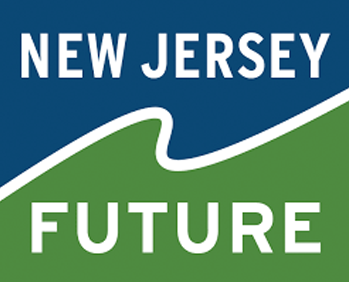Before vs. After the Rule Change: Side-by-Side Comparisons
Two key concepts: decentralization and infiltration. See how decentralized stormwater management can change your project and deliver return on investment.
The purpose of these “side-by-side” concept plans is to illustrate the practical effect and implementation of the new stormwater rules and updated BMP Manual. There are two fundamental concepts to understand:
- Decentralization is key. Stormwater management BMPs should be distributed around a site near where stormwater runoff is generated in order to minimize the accumulation of stormwater prior to treatment and mitigation. Groundwater recharge and water quality standards must be met using these distributed BMPs (see Table 5-1).
- Infiltration through green infrastructure now “counts.” The prior BMP Manual guidelines prohibited counting infiltration in demonstrating compliance with the quantitative standards. Under the prior rule, the only standard accepted method to account for BMP volume was by hydraulically routing each BMP. Under the new rule, all stormwater BMPs can account for infiltration during a storm event, thereby increasing a BMP’s ability to reduce water quantity and reducing the land area used for stormwater management.
The following side-by-side comparisons illustrate how decentralized green infrastructure could affect site design, including additional development yield, potential cost savings and the predictability that comes with objective criteria for design and review — which should streamline the time required for both.
Click through to each comparison and use the slider tool to explore the differences between old and new design options.




